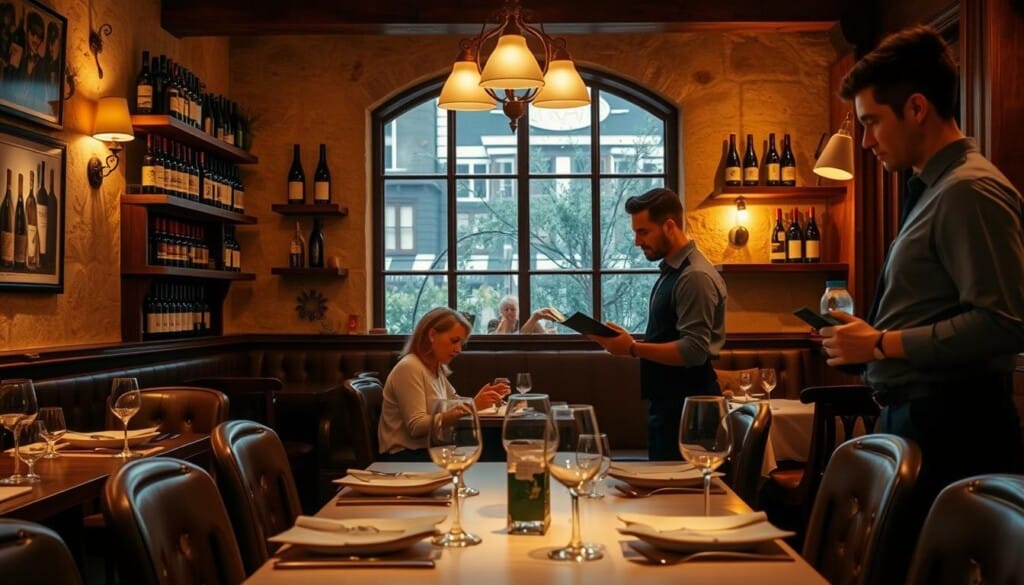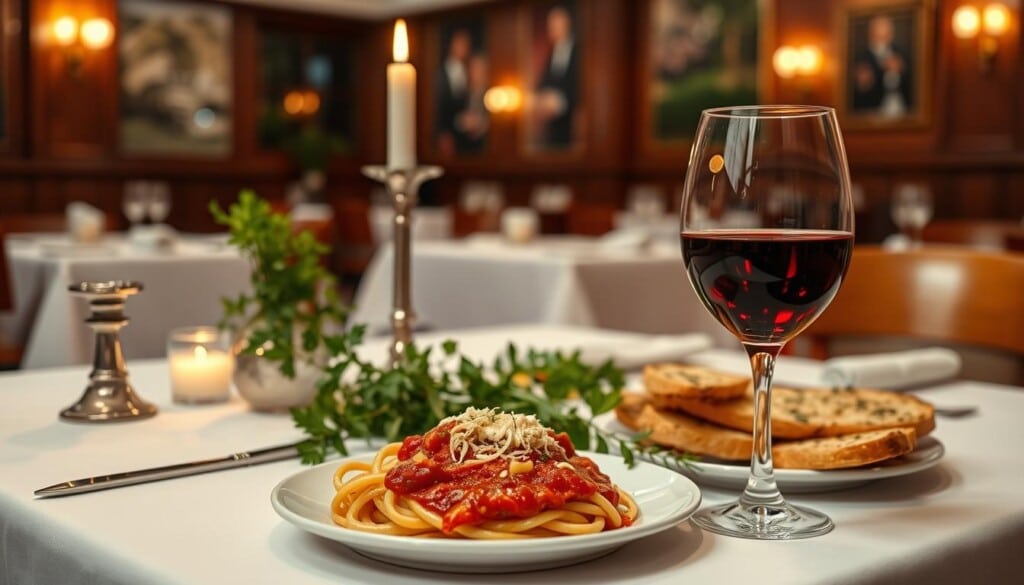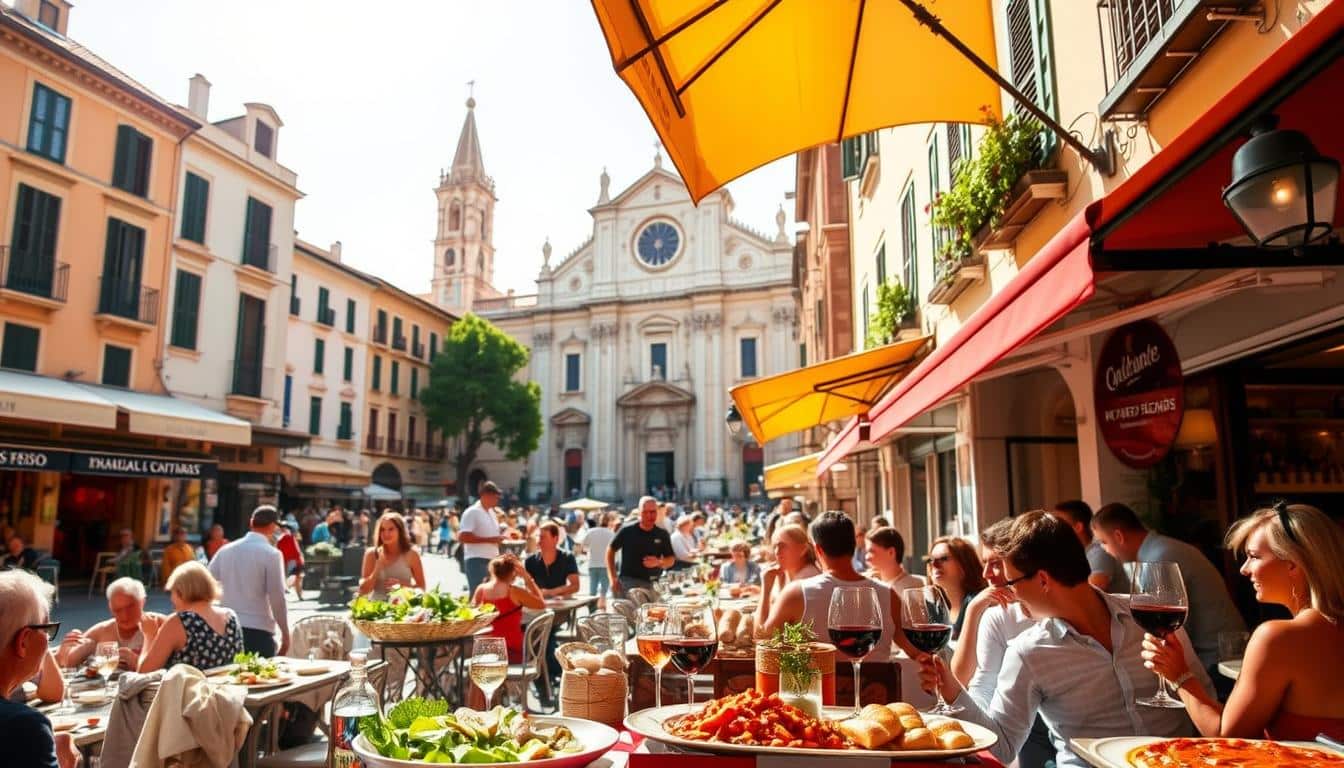Imagine finding the best authentic Italian food right in your neighborhood. Italian cuisine has become a big part of American culture. But, do you know where to find the top Italian food restaurants? This article will guide you through the best places in the United States.
From famous chain restaurants to hidden local spots, we’ve got you covered. Discover the top Italian restaurants that offer a wide range of experiences. These places are perfect for anyone who loves food.
Key Takeaways
- Italian cuisine plays an essential role in American dining culture.
- Explore both renowned chains and hidden local gems that offer authentic dishes.
- Diverse regional varieties highlight the richness of Italian flavors.
- Understanding the cultural significance of Italian food enhances the dining experience.
- Locating the best Italian restaurants is simpler than ever with LocalZ.
- Community reviews provide valuable insights on restaurant choices.
Discovering the Essence of Italian Cuisine
Italian cuisine is a wide range of flavors and traditions that have lasted for centuries. The history of Italian cooking is the base for the many and varied dishes we see today. Each ingredient is key, showing how taste and authenticity come together.
The Rich History of Italian Cooking
The history of Italian cooking is a mix of many influences. It goes back to ancient Rome and includes flavors from the Moors in the Medieval period. The Renaissance brought a focus on quality and where ingredients come from, setting the stage for the dishes we love today.
Key Ingredients That Define Italian Dishes
Key ingredients in Italian cooking are top-notch olive oil, fresh tomatoes, fragrant herbs, and a variety of cheeses. These are essential for making dishes that truly capture Italy’s spirit. Knowing how to pick and use these ingredients makes a meal unforgettable.
Regional Varieties of Italian Food
Italian dishes vary by region, showing Italy’s rich land. The north is known for creamy risottos, while the south is famous for its spicy sauces. Knowing these differences lets diners enjoy the unique tastes of Italy, making every meal special.
Best Cities for Italian Food Lovers
Major cities across the United States are known for their Italian food. They offer dishes filled with regional flavors, creating a lively dining scene. Each city has its own take on Italian cuisine, impressing both visitors and locals.
New York: The Culinary Capital
New York is unmatched for Italian dining, with Little Italy being a culinary gem. Restaurants here serve everything from classic pasta to gourmet seafood. Whether you’re looking for a fancy meal or a cozy trattoria, New York has it all.
Chicago: A Slice of Italian Heritage
Chicago is famous for its deep-dish pizza, a unique twist on Italian cuisine. This dish shows the city’s ability to adapt while keeping true to its roots. Italian bakeries and family restaurants add to Chicago’s rich food culture, making it a must-visit for Italian food lovers.
San Francisco: Fusion and Authenticity
San Francisco is a mix of traditional and modern Italian cooking. The city’s food scene loves to try new things, using fresh, seasonal ingredients. From classic dishes to new culinary adventures, San Francisco offers a unique Italian food experience.

Iconic Italian Dishes to Savor
Italy’s food scene is full of flavors and textures. Each dish has its own story, showing off regional tastes and old recipes. From pasta to desserts, these dishes capture the heart of Italian food.
Classic Pasta Varieties
Spaghetti Aglio e Olio, Lasagna, and Fettuccine Alfredo are favorites. They show off Italy’s cuisine with fresh ingredients and old cooking ways. Spaghetti Aglio e Olio is simple, while Lasagna is hearty, pleasing everyone.
Signature Appetizers to Try
Italian appetizers are a great start to any meal. Bruschetta, Caprese Salad, and Arancini are full of flavor. They excite your taste buds and show off Italy’s top ingredients.
Irresistible Desserts Beyond Tiramisu
Italian desserts are a world of sweetness, with more than just Tiramisu. Panna Cotta, Cannoli, and Zabaione add depth and creativity. These sweets celebrate Italy’s rich dessert tradition, ending meals on a sweet note.
How to Find Italian Food Restaurants Near You
Finding great Italian food is now easier with the LocalZ directory. This tool helps you make better choices for dining out. It’s easy to use and shows you restaurants that fit your taste.
Utilizing LocalZ for Your Search
Looking for Italian restaurants is simple with LocalZ. Just type in what you’re looking for, and you’ll find great places. It’s perfect for finding authentic Italian spots that might not show up on regular searches.
Filtering Options for a Tailored Experience
The LocalZ directory has cool filters like “best Italian restaurants” and “Italian food near me.” These help you find places that match your needs, like special diets or atmosphere. It makes finding the right spot easier and more fun.
Importance of Community Reviews
Reviews from others are key when choosing a restaurant. They tell you about the food and service. On LocalZ, you can read what others say to help you pick the best place to eat.
Top-Rated Italian Restaurants in the US
Exploring the top-rated Italian restaurants in the US is a journey through amazing food scenes. These places are known for their outstanding Italian dining, blending old traditions with new twists. Each spot is proud to offer something unique and a warm atmosphere.
La Pergola, Washington D.C.
La Pergola is a top spot for Italian fine dining in Washington D.C. It offers a menu that mixes classic Italian dishes with modern touches. The dishes show respect for old ways while adding a creative spin, making it a standout.
Carbone, New York City
Carbone is in the heart of New York City and brings back old times with its lively vibe. It serves famous Italian dishes in a creative way, from homemade pasta to seafood. Its mix of old flavors and new presentation makes it a top choice.
Giordano’s, Chicago
Giordano’s is known for its signature stuffed deep-dish pizza, a favorite in Chicago. It offers rich Italian flavors and a satisfying meal. Giordano’s captures the heart of Italian comfort food, making it a top pick.
If you’re looking for more Italian food, check out dining options on LocalZ. It can help you find both hidden spots and well-known places, making your food adventures even better.
Making Reservations at Your Favorite Spot
Getting restaurant reservations at popular Italian spots can make your dining experience better. LocalZ makes booking online easy, connecting you with your favorite places. This saves time and lets you enjoy your meal more.
Online Booking Features on LocalZ
LocalZ’s online booking is easy to use. You can quickly find times and choose your dining options. This makes booking smoother, even on busy weekends.
Tips for Securing the Best Tables
To get the best tables, book early. This is key during busy times. Talking to the staff on LocalZ can also help find the best times.
Special Occasion Considerations
Special occasions like anniversaries or birthdays are special at Italian restaurants. Many places offer unique experiences for these events. Asking about special arrangements can make your meal unforgettable.

Supporting Local Italian Restaurants
Supporting local restaurants is key to a thriving community. They bring more than just economic benefits. They create jobs and help keep cultural traditions alive. When you choose a local Italian restaurant, you help the whole community grow.
The Impact of Local Businesses
Local Italian restaurants are vital to community life. They offer jobs and build connections among people. Their lively atmosphere draws visitors, boosting the local economy.
By eating at these places, you help your community flourish.
Community Events Sponsored by LocalZ
LocalZ sponsors events to highlight local restaurants. These events bring people together to enjoy Italian food. They help people discover the rich flavors in their area.
These gatherings strengthen cultural ties. They encourage people to try local food, supporting the community.
Partnership Opportunities for Restaurants
Italian restaurants can team up with LocalZ for great benefits. These partnerships help restaurants reach more customers. They can attract a wider audience, keeping Italian food alive in the community.
Enhancing Your Dining Experience
Improving your dining experience is more than just eating tasty food. Wine pairing lets you bring out the best in flavors and balance dishes. Italian wines, with their deep flavors, pair well with the wide range of Italian dishes. Choosing the right wine is key to enjoying your meal fully.

Many Italian restaurants offer cooking classes. These classes let you learn by doing, making real Italian dishes. It’s a fun way to learn about Italian cooking and enjoy your meal more.
Food blogs and local zines are great for finding new places to eat. They highlight secret spots and share tips on the local food scene. By following these, you can discover new restaurants, dishes, and experiences in Italian cuisine.
Enjoying Italian Food: Beyond the Plate
Italian cuisine is more than just food. It’s an experience that goes beyond the table. You can dive into the culinary world through tours led by chefs or locals. This hands-on learning lets you see the real taste of Italian dishes and learn how they’re made.
Culinary Tours and Experiences
Culinary tours take your love for Italian food to the next level. You’ll visit local markets and meet food producers. This lets you learn how to make regional dishes and improve your cooking skills.
These tours help you appreciate Italian food more. They also inspire you to try new things in your kitchen.
Italian Food Festivals to Attend
Italian food festivals are lively celebrations of regional dishes. They bring together people who love Italian food. You can watch pasta-making and taste olive oils, all while making new friends.
These festivals are a great way to learn about Italy’s food diversity. They make you feel part of a community that shares your passion for food.
Bringing Italian Flavors Home
Trying to make your favorite Italian dishes at home is fun. It lets you keep the culinary journey alive. By using authentic recipes and ingredients, you can bring Italy’s flavors into your kitchen.
Home cooking Italian cuisine helps you grow as a cook. It’s a way to share your love for Italian food with others. It makes meals with family and friends even more special.

